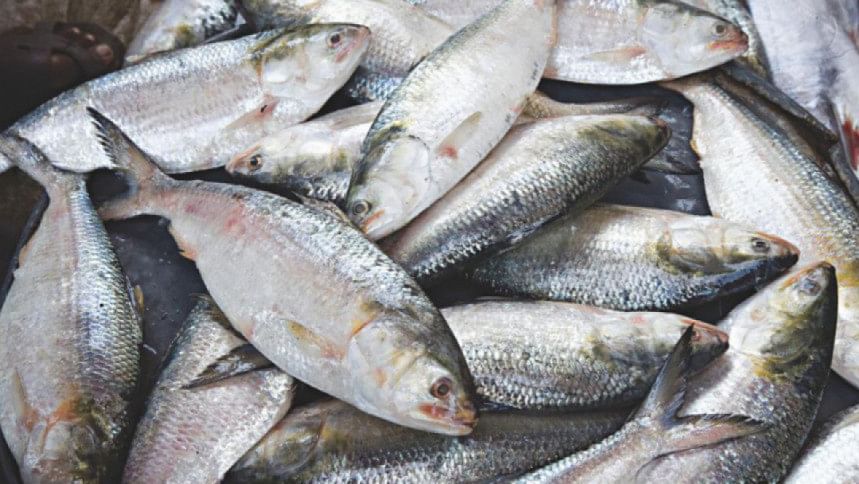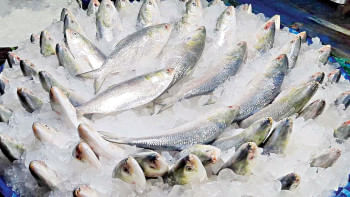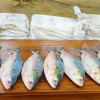How male Hilsa become female? New study published

A team of researchers from the Department of Zoology at Jagannath University (JnU) and the Department of Lab of Molecular Systematics and Ecology at Shanghai Ocean University in China have jointly conducted three research projects on Hilsa.
The research has revealed how male Hilsa undergo sex reversal to become female.
The findings of these studies were presented at a seminar and press conference held at the zoology department at JnU on Thursday (February 27).
Presenting the research results, the researchers said a total of 203 Hilsa of various sizes and age were collected from six regions of the Padma and Meghna rivers and the Bay of Bengal.
In seven specimen, the reproductive tissues showed the simultaneous presence of sperm and eggs, providing evidence of sex change. The overall research results suggest that Hilsa fish complete their first year of reproduction as males and then migrate to the sea in search of food. While in the sea, these Hilsa gradually transform into females and return to the rivers for reproduction in their second year.
Scientists hope that this research will serve as a significant milestone in unravelling the complete life cycle, reproductive strategies, and the mystery of sex reversal in Hilsa.
Kishore Kumar Sarkar, a lecturer at Shanghai Ocean University, said, "Researching the reproduction of Hilsa was a risky endeavour for us. By working separately in rivers and the sea, we were able to gather crucial information about Hilsa reproduction."
Joining the event online, Prof Chenhong Li of Shanghai Ocean University, stated, "This research on Hilsa has been ongoing for a long time. It has been successful due to the efforts of many."
Prof Md Rezaul Karim, vice-chancellor of Jagannath University, was present as chief guest at the seminar presided over by Prof Abdullah Al Masud, chairman of zoology department.
Sabina Sharmin, treasurer of JnU; Prof Mallik Akram Hossain, dean of Faculty of Life and Earth Sciences; Md Zia Haider Chowdhury, additional director general of the Department of Fisheries; and Prof Imranul Haque, director (research) of Jagannath University, were present as special guests.
The research was conducted with the participation of Dr Mohammad Abdul Baki, Professor at the Department of Zoology, Jagannath University; Professor Dr Chenhong Li from the Lab of Molecular Systematics and Ecology, Shanghai Ocean University, China; Dr Anirban Sarker, Associate Professor at the Department of Zoology, Jagannath University; Dr Kishor Kumar Sarker, Lecturer at Shanghai Ocean University, China; and Dr Md Rashedur Rahman, Analyst at the Quality Control Laboratory, Department of Fisheries, Khulna.

 For all latest news, follow The Daily Star's Google News channel.
For all latest news, follow The Daily Star's Google News channel. 









Comments